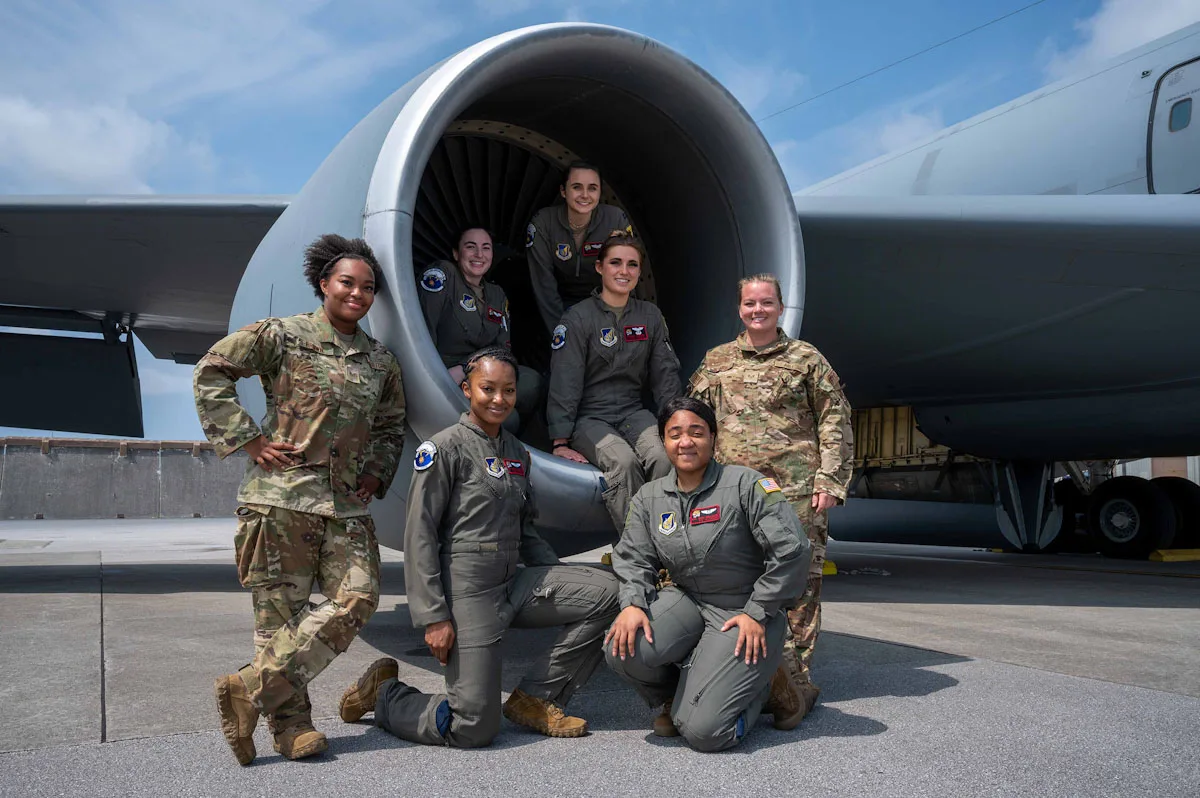In the vast expanse of the sky, where bravery knows no bounds, women have soared to new heights in the realm of United States military aviation. Journey of Women in United States Military Aviation is one of courage, determination, and unwavering commitment to service. Let us embark on a journey to explore the indelible mark women have made in the skies above.
Table of Contents
Introduction: Breaking Barriers, Defying Gravity
Women have always been drawn to the skies, their spirits yearning for the freedom of flight. In the early days of aviation, they faced formidable barriers, yet their passion and resilience propelled them forward. Today, women stand as integral pillars of United States military aviation, their contributions shaping the course of history.
Pioneering Aviators: Trailblazers of the Sky
In the early 20th century, as aviation was in its infancy, courageous women took to the skies, defying societal norms and expectations. Amelia Earhart, Bessie Coleman, and Katherine Stinson were among the trailblazers who paved the way for future generations of female aviators. Their daring exploits captured the imagination of the nation and inspired countless others to pursue their dreams of flight.
World War II: The Rise of the WASPs
With the outbreak of World War II, the demand for skilled pilots reached unprecedented levels. In response, the Women Airforce Service Pilots (WASPs) program was established, enlisting over 1,000 women to serve as civilian pilots. These brave women flew a variety of missions, including ferrying aircraft, towing targets, and conducting test flights. Despite facing discrimination and adversity, they proved their mettle and earned their rightful place in history.
Cold War Era: Breaking the Sound Barrier
As the Cold War loomed large, women continued to make strides in military aviation. Jacqueline Cochran, a pioneering aviator and entrepreneur, became the first woman to break the sound barrier in 1953. Her historic achievement shattered stereotypes and paved the way for future generations of female pilots to excel in the field.
Modern Era: Shattering Glass Ceilings
In the modern era, women have continued to rise through the ranks of United States military aviation, breaking through glass ceilings and defying expectations. From combat pilots to aerospace engineers, women have proven themselves as indispensable members of the aviation community. Their skills, dedication, and leadership have been instrumental in advancing the capabilities of the United States Armed Forces.
Challenges and Triumphs
Despite their many accomplishments, women in military aviation still face significant challenges. Gender stereotypes, institutional bias, and lack of representation remain persistent barriers to equality. However, women continue to push boundaries and overcome obstacles, paving the way for future generations to succeed in the field.
Future Horizons: Inspiring Generations
As we look to the future, the role of women in United States military aviation will only continue to grow in importance. Through their courage, determination, and unwavering commitment to service, they inspire generations of young women to reach for the stars and pursue their dreams of flight.
Conclusion for Women in United States Military Aviation
In conclusion, the role of women in United States military aviation is a story of courage, resilience, and determination in the face of adversity. From the pioneering aviators of the early 20th century to the modern-day fighter pilots and engineers, women have made invaluable contributions to the field of aviation, shaping the course of history and inspiring future generations to soar to new heights.
FAQs: Frequently Asked Questions
1. What challenges did women face in early aviation?
Women in early aviation faced numerous challenges, including societal norms, lack of access to training and resources, and institutional discrimination.
2. How did the WASPs contribute to the war effort?
The Women Airforce Service Pilots (WASPs) played a crucial role in World War II by ferrying aircraft, conducting test flights, and performing various other essential tasks, freeing up male pilots for combat duty.
3. Who was the first woman to break the sound barrier?
Jacqueline Cochran, a pioneering aviator, became the first woman to break the sound barrier in 1953, achieving this historic milestone in a Canadair Sabre.
4. What are some ongoing challenges faced by women in military aviation?
Women in military aviation continue to face challenges such as gender stereotypes, institutional bias, and lack of representation in leadership positions.
5. How can we support women in military aviation?
Supporting women in military aviation involves promoting gender equality, providing access to training and opportunities, and fostering a supportive and inclusive environment within the armed forces.
Please read here for the Evolution of United states military aviation
For information on TOP 10 ICONIC AIRCRAFT IN UNITED STATES MILITARY AVIATION HISTORY, please click here.
Do follow here for more information on above article.
